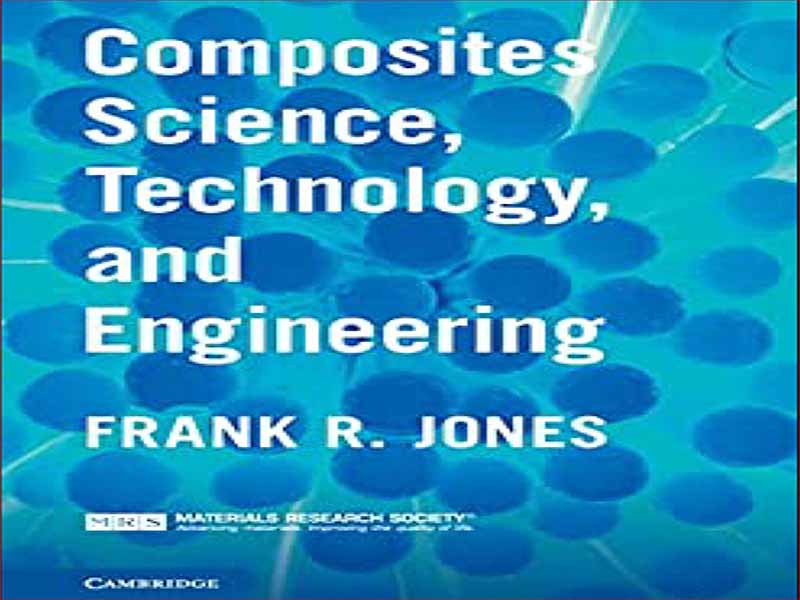- عنوان کتاب: Composites Science, Technology, and Engineering
- نویسنده: Frank R. Jones
- حوزه: کامپوزیت
- سال انتشار: 2022
- تعداد صفحه: 407
- زبان اصلی: انگلیسی
- نوع فایل: pdf
- حجم فایل: 15.3 مگابایت
مواد کامپوزیت در طول فعالیت علمی من به بلوغ رسیده اند. زمانی که در سال 1960 به عنوان تکنسین آزمایشگاهی به اسکات بادر و شرکت پیوستم، الیاف شیشه یا فایبرگلاس ماده جدیدی برای قالبگیری تماسی با استفاده از پردازش دستی بود. به طور معمول، بدنه قایق با استفاده از این فناوری تولید می شد. با این حال، با کشف فیبر کربن با استحکام بالا در اوایل دهه 1960 توسط ویلیام وات و همکارانش در تأسیسات هواپیماهای سلطنتی، پلاستیک های فیبر کربنی یا CFRP باعث توسعه پلاستیک یا کامپوزیت های تقویت شده شدند زیرا تقویت کننده باعث می شد عملکرد بالا و وزن کم به دست آید. با یکدیگر. به موازات آن، آکیو شیندو در ژاپن نیز الیاف کربن قوی تهیه کرده بود، اما خواص آن پایین بود. در نظر گرفته شده است که محدودیت استفاده شده در Farnborough در طول کربنیزاسیون بحرانی بود. کامپوزیت های زمینه فلزی (MMC) و ماتریس سرامیکی (CMC) نیز از کشف الیاف ریز (قطر کوچک) با استحکام بالا که می توانند در برابر دمای فرآیند مقاومت کنند، بهره مند شدند. الیاف بور برای اولین بار توسط C. P. Talley در سال 1959 گزارش شد. در سال 1978، S. Yajima سنتز الیاف “سیلیکون کاربید” را از یک پیش ماده پلیمری گزارش کرد که توسعه CMC ها را تشویق کرد. درک بیرچال در اوایل دهه 1980 نشان داد که چگونه می توان الیاف آلومینا ریز را از یک پیش ماده سل-ژل آبی چرخاند. این اکتشافات علاقه به تقویت فلز را برانگیخت. قبل از این پیشرفت ها، الیاف بور و الیاف کاربید سیلیکون از رسوب بخار شیمیایی بر روی سیم تنگستن در دسترس بودند و به این معنی که قطر الیاف 2 تا 300 میکرومتر بود که فرآیندها و شکل های تولید کامپوزیت را محدود می کرد. نباید فراموش کنیم که آرماتورهای الیافی از زمان کتاب مقدس، زمانی که از خاک رس تقویت شده با کاه برای آجر استفاده می شد، استفاده می شد.
Composite materials have matured during my scientific career. When I joined Scott Bader and Co. in 1960 as a laboratory technician, glass fibre or fibreglass was a novel material for contact moulding using hand lay-up processing. Typically, boat hulls were manufactured using this technology. However, with the discovery of highstrength carbon fibre in the early 1960s by William Watt and colleagues at the Royal Aircraft Establishment, carbon-fibre plastics or CFRP stimulated the development of reinforced plastics or composites because the reinforcement enabled high performance and low weight to be achieved together. In parallel, Akio Shindo in Japan had also prepared strong carbon fibres, but the properties were inferior. It is considered that the constraint used in Farnborough during carbonization was critical. Metal matrix (MMC) and ceramic matrix (CMC) composites also benefited from the discovery of fine (small diameter) high-strength fibres that could resist the process temperatures. Boron fibres were first reported by C. P. Talley in 1959. In 1978, S. Yajima reported the synthesis of ‘silicon carbide’ fibres from a polymeric precursor, which encouraged the development of CMCs. Derek Birchall showed in the early 1980s how fine alumina fibres could be spun from an aqueous sol-gel precursor. These discoveries stimulated interest in metal reinforcement. Prior to these developments, boron fibres and silicon carbide fibres were available from chemical vapour deposition onto tungsten wire, and as such meant that the fibres had diameters of 2–300 μm, which limited composite manufacturing processes and shapes. We should not forget that fibrous reinforcements have been used since biblical times, when straw-reinforced clay was used for bricks.
این کتاب را میتوانید از لینک زیر بصورت رایگان دانلود کنید:




































نظرات کاربران